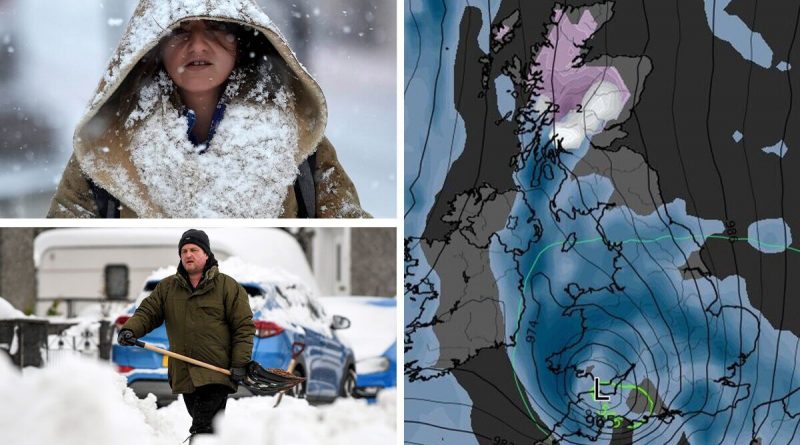Met Office confirms when and where first snow of 2023 will fall
UK weather: Met Office forecasts rain and mild conditions
We use your sign-up to provide content in ways you’ve consented to and to improve our understanding of you. This may include adverts from us and 3rd parties based on our understanding. You can unsubscribe at any time. More info
The Met Office has detailed how a tirade of weather conditions are set to hit the UK this week – with snow, rain and strong winds on the cards. The leading forecaster made the admission in its long-range outlook for January – something which is updated daily. While many meteorologists are poised to predict another cold snap, the Met Office has now thrown its weight behind a snow prediction – with the first flurry to hit the country by this weekend. But despite this being the first wintry shower of 2023 – it looks likely to lay over higher ground, with no disruption expected at present.
In its outlook from January 6 to 17, it says: “A band of rain is expected to push in from the west through Saturday, heavier in the west and clearing eastern coasts through the afternoon, possibly persisting longer in the southeast.
“Blustery showers will follow in the west, perhaps wintry over hills, with a risk of coastal gales. Through into next week, a continuation of this unsettled theme is most likely.
“Wettest and windiest conditions are expected across the west and northwest, where showers will sometimes merge into longer spells of rain, with a chance of snow mainly on high ground.
“Drier conditions are more probable to the south, with occasional rain at times. Disruptive winds remain a risk, particularly for the northwest and other exposed coasts. Temperature widely average to mild throughout, with some colder spells in the north.”


Looking right up until the end of the month – the predictions become vaguer. This is because confidence is much lower for any weather events more than a week away. But, as the Met Office says, the chance of even more snow remains.
But this risk is not UK-wide, with the south east set to experience milder temperatures, and be more susceptible to rain, if anything. In its long-range forecast from January 17 to 31, it says: “This period will see a continuation of a predominantly westerly flow, bringing a northwest-southeast split across the UK.
“Northern and northwestern areas will continue to see the wettest and windiest weather, meanwhile the south may see more settled conditions. Occasional colder interludes may bring a risk of fog, frost, and snow, but generally, temperatures will be mild for most.”


Last month bucked the trend of 2022 and ended the year as the only month which saw below-average temperatures, according to early provisional Met Office figures. With 2022 provisionally confirmed as the UK’s warmest year on record for the UK, December ended a 15-month run of above average temperatures, from September 2021.
It was an overall cool, dry and sunny month for the UK compared to 1991-2020 long-term averages.
So far the forecast for January is not as severe, with short bursts of cold weather being the furthest any forecaster will go at the moment. Jim Dale, senior meteorologist at British Weather Services told Express.co.uk more about the intermittent snowfall predictions.
He said: “Scottish and northern England will get intermittent snowfalls – but it will be mainly in Scotland. Scotland more or less stays in the cold, or the freezer, while southern England only sees transient cold.
“Wavy lines across the UK can be seen as the polar front dips and lurches.”
Speaking to Express.co.uk earlier today, Mr Dale spoke about the influx of rain that will be arriving on our shores first of all. He said: “The main story is going to be the rain, which over the next few days will hit parts of the country which have already seen a lot, so there will be a risk of flooding.
“There will also be some wind with this, and we will see temperatures drop at the end of the week as a dip in the jet stream brings the Polar front across Britain, largely across Scotland but perhaps into northern England.
“There will be the risk of snow in the north of the country if that dip is low enough, so this is going to be one to watch.” Snake-like twists of the jet stream will drive Arctic air southwards sending the mercury in parts plummeting below freezing, he warned.
Source: Read Full Article


